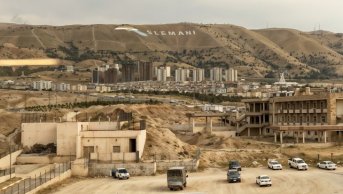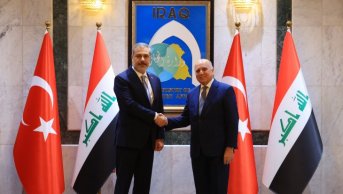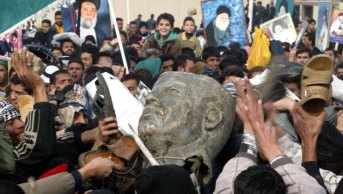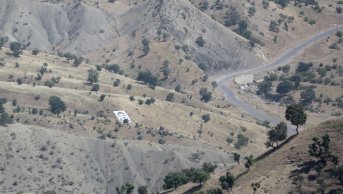The PKK’s New Strategy in Iraq
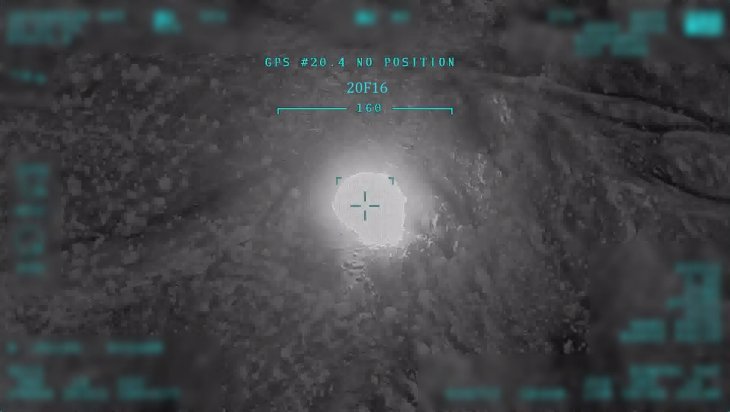
Iraq is struggling against the impact of the corona virus just like the rest of the world but there is another problem in Iraq that could be more dangerous and much more difficult to control than the corona virus. This is the PKK terrorist organization, which is planning new attacks and an onslaught in Iraq and is at pains to expand its sphere of influence.
The PKK created a war zone particularly in the northern part of Iraq through a series of terrorist acts in the country in December. “Operation Claw” has been continuing since May 2019 against the PKK’s presence in northern Iraq. The terrorists, which were stuck in mountainous areas as a result of "Operation Claw" have begun to deploy in residential areas. The terrorist organization aims at slowing down operations as a tactical move by taking advantage of Turkey’s sensitivity for the civilians. However, strategically, the PKK's entry into civilian areas has reached a level that threatens the administration of the Iraqi Kurdistan Regional Administration (KRG), which controls these regions, and even the territorial sovereignty of Iraq.
The PKK’s New Target
Just like what the YPG, the Syrian branch of the PKK, is trying to do in Syria, the PKK is attempting to gain dominion in northern Iraq in a similar way. Venturing to do the same in Sinjar by using ISIS as an excuse, and starting to “establish cantons,” the PKK succeeded to a certain extent. However, it was put under pressure with the Sinjar Agreement, signed under the auspices of the UN in October 2020 between the Iraqi central government and Iraqi Kurdish Regional Government (KRG), which is demanding the “withdrawal of foreign powers” in Sinjar. Then, the Iraqi administration announced that the Sinjar Agreement was put into force and Iraqi security forces were deployed in Sinjar. Yet, it is known that the PKK and its extensions still persist in their presence both in Sinjar and the Sinjar mountainside. It is observed that the PKK, whose radius of action was narrowed in Sinjar, is more mobilized in other civilian areas in order to make room for itself. By doing this, it challenges the power and authority of the KRG hard. The clashes between the PKK and Peshmerga forces in December are the most evident examples of this.
As a result of the attacks of the PKK on 13 and 15 December, clashes took place between the PKK terrorist organization and the Peshmerga in Duhok’s Amadiya district in northern Iraq and at the Syrian – Iraqi border. Commanders from the Peshmerga forces and members of the terrorist organization were killed in these clashes. Considering that the regions where the conflicts are taking place are the dominion of the Kurdistan Democratic Party (KDP) led by Mesut Barzani, it can be said that the PKK directly targets the KDP. Both the KDP and PKK find grounds in the same region in northern Iraq (especially Dohuk and Arbil) and seek influence in the same geography. This region, which is located on the social and geographical crossroads between Iraq and Turkey, is a natural battleground between the PKK and KDP. Because of the close relations of the KDP with Turkey, the PKK is confronting the KDP harder.
The Patriotic Union of Kurdistan (PUK) is Using the PKK Against the KDP
On the other hand, the PKK's effectiveness in and around Sulaymaniyah is also at a considerable level and it is even possible to say that the PKK can more freely operate in this region. The reason for this freedom is that Sulaymaniyah and its surroundings are controlled by the Patriotic Union of Kurdistan (PUK) led by the Talabani family. It should not be overlooked that the Iraqi PKK and PUK are ideologically close. Besides, other influential parties in Sulaymaniyah such as the Goran Movement and New Generation Movement have close relations with the PKK. As a matter of fact, one member of the PKK’s mountain cadres (Yusra Rajab) was elected to the Iraqi parliament representing the New Generation Movement. He is now the Vice President of the Defense and Security Commission in the Iraqi Parliament.
The PUK also is using the PKK as a means of putting pressure on the KDP and trying to weaken the KDP's power by the PKK. As a matter of fact, it is obvious that the PKK is one of the most effective participants in the protests in Sulaymaniyah, against the KRG (mostly the KDP) which were initiated on the grounds of the failure to pay salaries. During protests, public and party buildings were burned down and people died. In fact, Ata Saravi, a member of the PUK’s executive committee clearly revealed that the PKK was embittering the events in Sulaymaniyah. Still, it is possible to say that the PUK is more tolerant towards the PKK than the KDP since the region where the PKK wants to dominate mostly covers the areas controlled by the KDP. Moreover, it can be said that, after the independence referendum process in the IKYB in 2017, disagreement showed up regarding the administrative structure of the KRG between the KDP and the PUK. It perhaps should be recalled that the PUK was not in favor of the referendum at that time. It can also be seen that the PUK administration is getting closer to Baghdad. In April 2020, the Sulaymaniyah Provincial Council, of which the KYB and Goran constitute the majority, initiated a study for establishing a decentralized system in the KRG and a "self-government" system for Sulaymaniyah. This initiative greatly disturbed the KDP, which advocates for a strong central administration.
The Iran Factor
In this attitude of the PUK, the Iran factor should also be kept in mind since Iran has a contribution in the development of the PUK’s relations with Baghdad and especially with Shiite groups. The close relationship between PUK and Iran is obvious.
Sulaymaniyah, the area of influence of the PUK, has a long border with Iran and it is the primary path for Iran’s access to northern Iraq. It can open out to the Kirkuk and Mosul line from there. It is frequently stated in Iraq that Iran wants to reach Syria by having efficiency and even control over this line.
Likewise, the presence of militia groups close to Iran within the Hashd al-Shaabi in northern Iraq is noteworthy. Particularly militia groups such as the Badr Organization, Kata'ib Hezbollah and Asa'ib Ahl al-Haq have taken their shares in the northern regions of Iraq. While the Badr organization is more influential in Kirkuk and surroundings, the Asa'ib Ahl al-Haq and Kata'ib Hezbollah forces are more effective in Mosul and its periphery. The main power on the borders of Syria – Iraq is Kata'ib Hezbollah. In addition to these, the Sinjar Resistance Units (YBŞ) founded by the PKK and that receive their salaries from the Hashd al-Shaabi organization, exist in the same territories.
Sinjar’s significance comes up once again here. It is to be noted that the groups close to Iran objected to the Sinjar Agreement which was made under the auspices of the UN and supported by the USA. Moreover, there is a serious tension between the militia groups close to Iran and the USA, which from time to time escalates into clashes and even attacks against the US Embassy. Following the clashes between PUK / PKK members and the Peshmerga, who tried to cross the Syrian border to Iraq on December 15, the KDP's demand from the US to set up troops on the border is remarkable. At this point, the conflict between the US and Iran plays a role in the KDP – PUK – PKK triangle.
In practical terms, this conflict even has an impact in Syria because the details of the clashes between the PKK and Peshmerga are quite interesting. The clash on 13 December occurred as PKK members tried to cross the Amediye region in Duhok, where the Roj Peshmerga (Syrian Kurds trained by the KDP) are located. A clash broke out between the two sides on December 15, since YPG / PKK members trying to cross the Syrian border to Iraq encountered an obstacle with the Peshmerga. The Syrian connection of both conflicts is striking. This is a clear indication that the KDP-PKK tension in Iraq is reflected in Syria.
Efforts of the USA
In the last 9 months, talks for unification on how the administration, security and politics will be shared in the areas of northern Syria highly populated by Kurds are going on with the USA’s arbitration. The parties involved in this negotiation are the Kurdish National Council in Syria (KNC) and the PYD, which is the PKK’s political branch in Syria. The current organization in areas in Syria populated by the Kurds is established and controlled by the PYD. However, the clashes that take place between the KDP – PKK have an impact on relations between the KNC, the extension of the KDP and the PYD, the extension of the PKK.
After reaching an agreement on some issues such as administrative sharing between the PYD and the KNC and the entry of the Roj Peshmerga Syrian Kurds into Syria, some political parties within the SKUK started to open their offices in the regions controlled by the PYD in Syria. Yet, consequent to the clashes between the PKK and Peshmerga, attacks were carried out against some of these offices. Mazlum Kobani, one of the YPG leaders, made statements in support of PKK’s stance towards the KDP and this situation intensified the already existing problems between the KNC and the PYD.
There is also an effort for cleansing the PKK from the YPG organization and transforming it into a more Syrian formation. The USA is putting efforts into establishing a more local Kurdish structure by grinding the PKK’s effectiveness. In this way, she is trying to make the Kurds in Syria an acceptable element in the future of Syria.
Sinjar’s Significance
Sinjar has particular importance in the USA's efforts since it has a highly critical location not only for the PKK’s access into Iraq from Syria, but also for the PKK’s control over the YPG. If Sinjar's status changes and the pressure on the PKK rises from the KDP and Iraqi security forces in Iraq, it may have a restrictive role on the PKK’s impact on the YPG. If Sinjar is governed by a structure that the Iraqi central government and the KDP have agreed to, the PKK's access to Syria and the YPG will decrease. This situation is extremely critical for Turkey since she is fighting intensively against terrorism in the north of Iraq. It is possible to state that Turkey’s position is clear when considering the PKK – KDP – PUK triangle, as well as the USA – Iran conflict.
But, if the newly elected President of the USA, Joe Biden, softens relations with Iran and holds a closer position to the Barzanis with whom he had strong ties in the past, this could lead to coercive factors for the PKK. However, Turkey has been fighting with not only the PKK terrorist organization but all structures associated with the PKK. Turkey’s position was clearly revealed in the Iraqi Prime Minister Mustafa Al-Kadhimi’s visit to Ankara on December 17. At this point, Turkey is contented with Iraq’s efforts for establishing dominion especially in Sinjar. However, such efforts are not adequate to totally eliminate the PKK from Iraq. Taking into account that there will be a new general election in Iraq in June 2021 and the government formation process is quite lengthy following the elections, it seems painstaking for Iraq to demonstrate an active position against the PKK. Therefore, it could be a possibility for the PKK and other terrorist groups as well as armed forces to find gaps in administration and security in Iraq. Considering the close relationship of security and political stability in Iraq, the situation could lead to an upsurge of instability in Iraq.
In the light of these, since Turkey considers the fight against PKK in Syria and Iraq as well as ISIS and even with FETÖ as a holistic counter-terrorism concept, regardless of the developments in the field, it could be concluded that Turkey’s fight against terrorist organizations will continue undeterred.
This article was published in Fikir Turu website under the title of “The PKK’s New Strategy in Iraq” on January 05, 2021.

